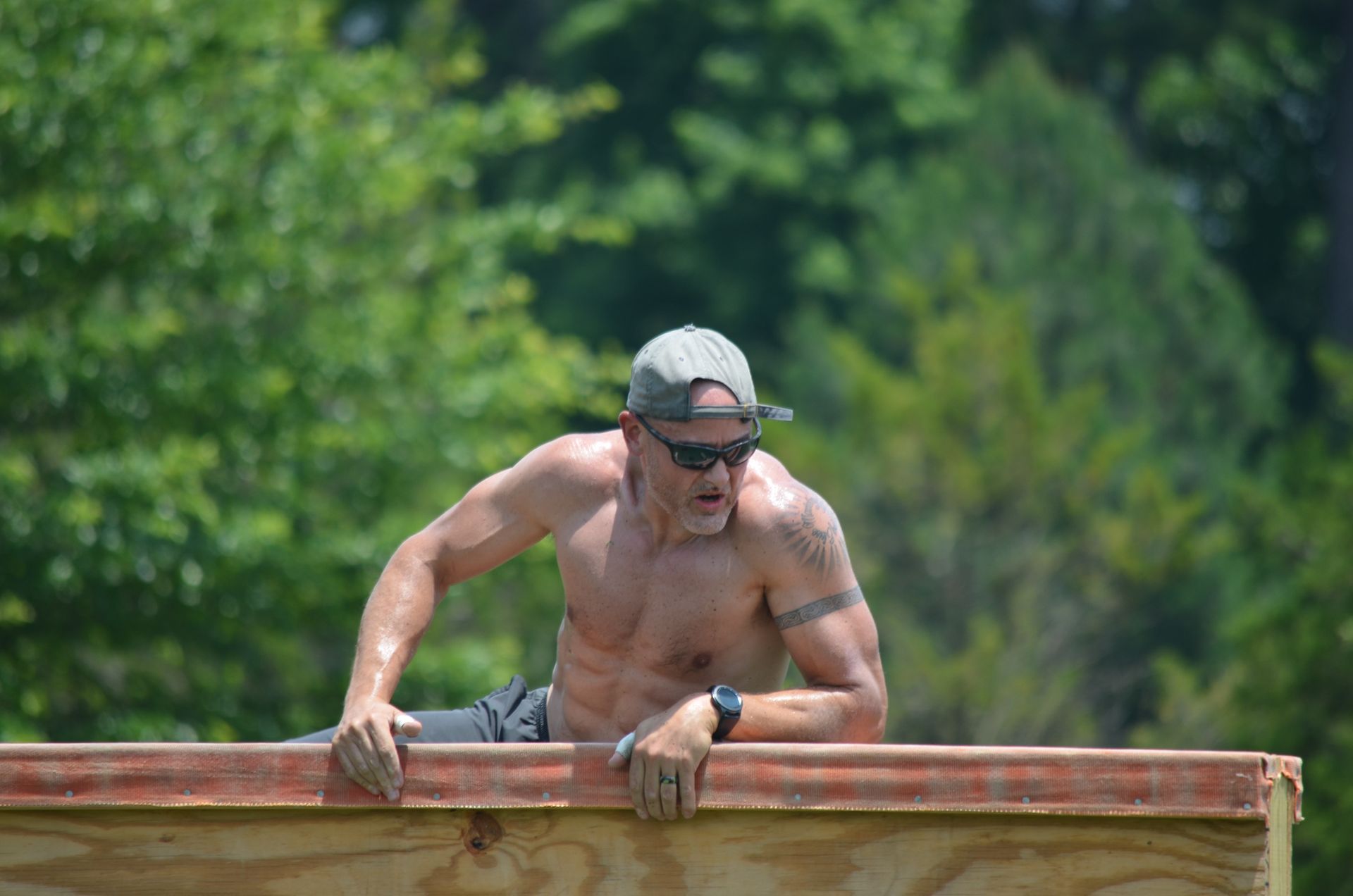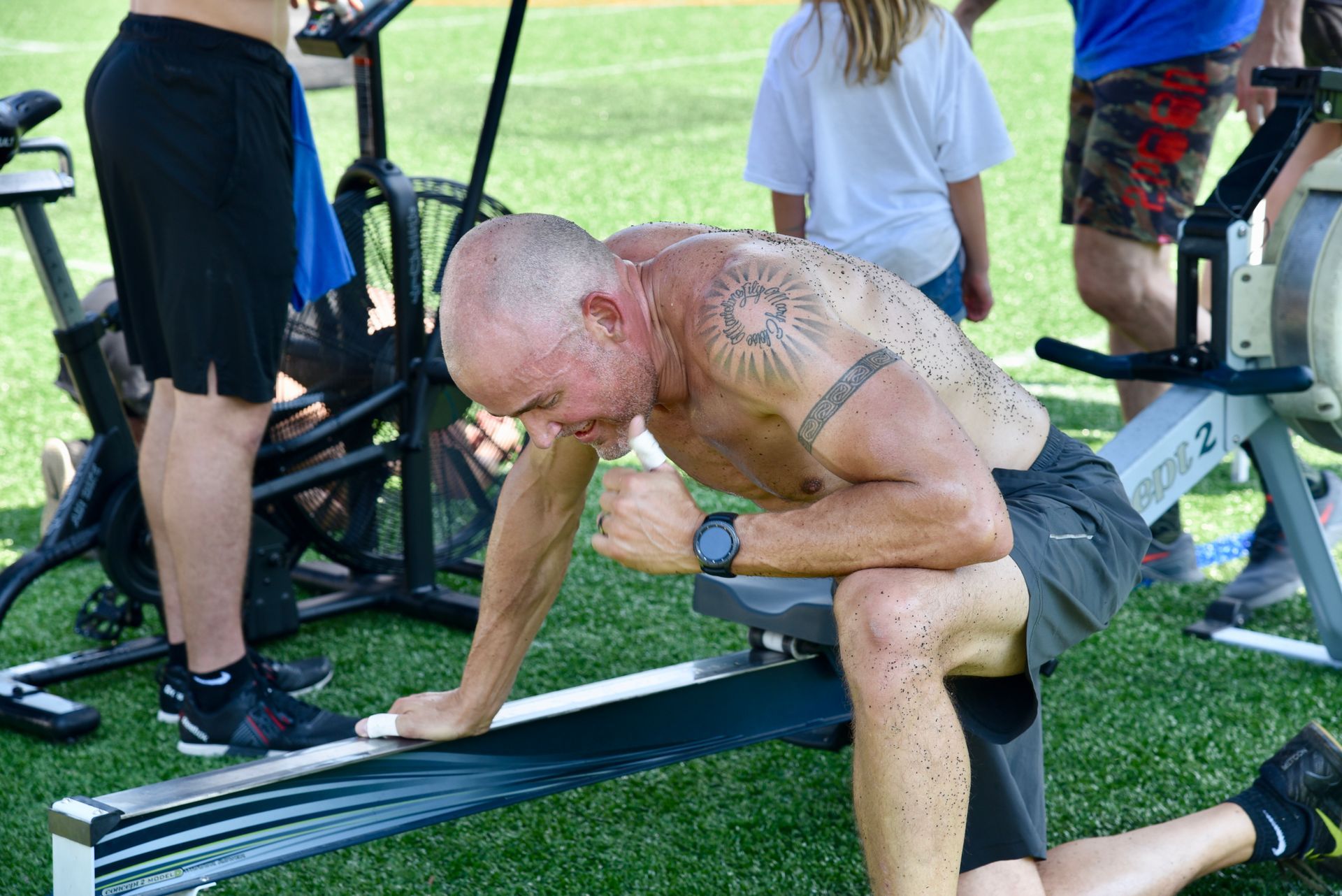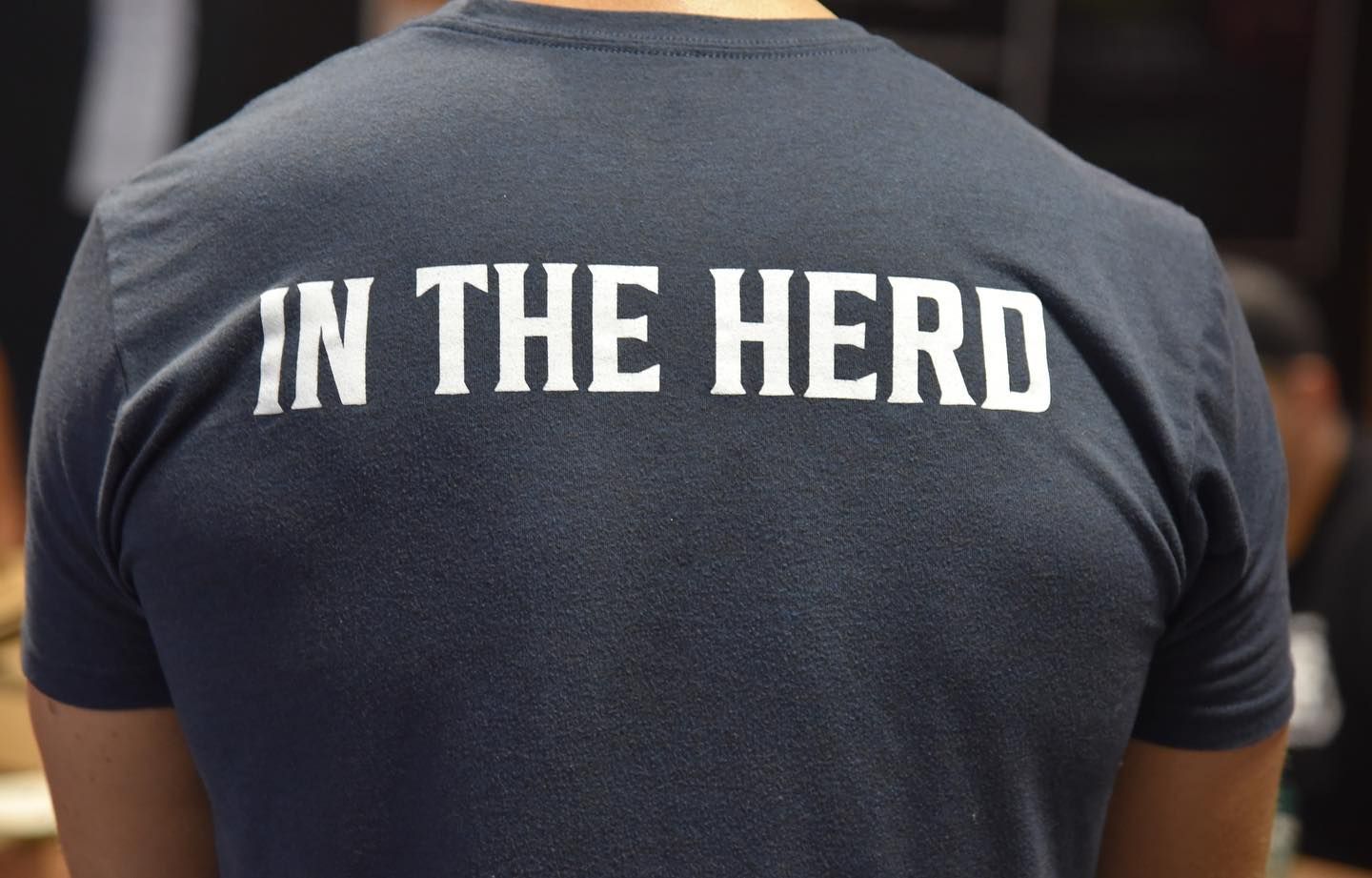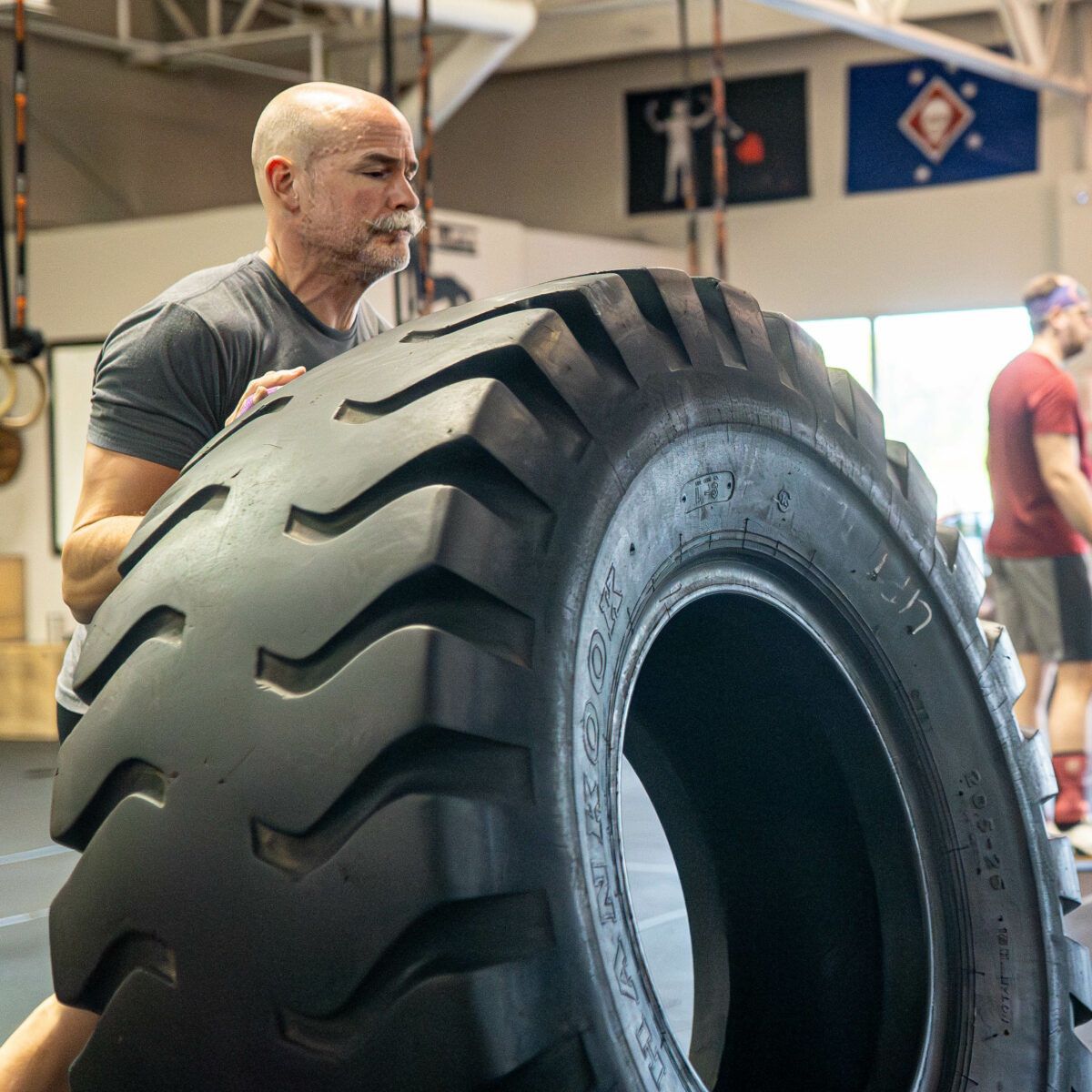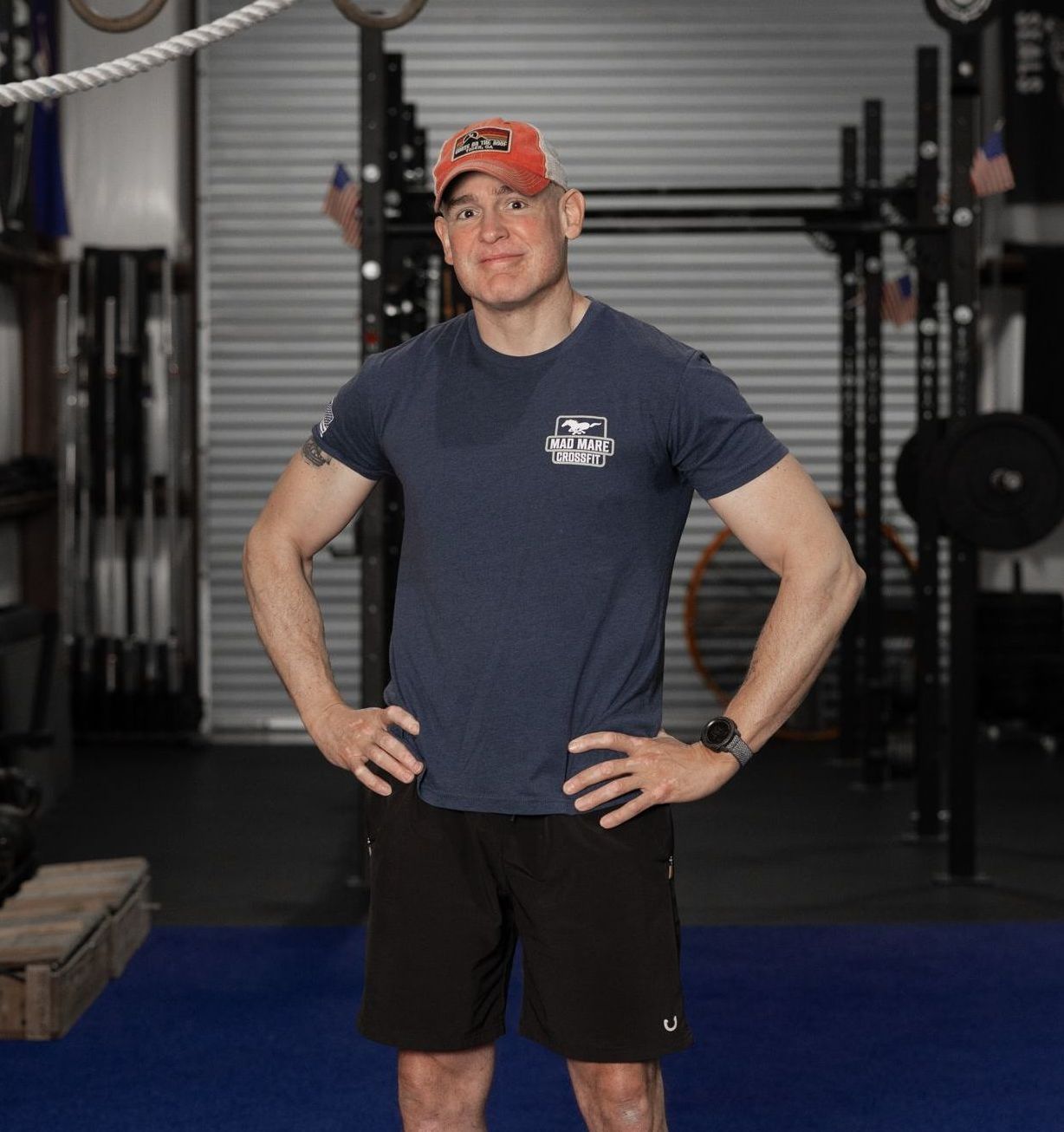What is ‘Murph’ and why do we do it?
What is ‘Murph’ and why do we do it?
Can anybody complete ‘Mur ph’?
Below is a picture of Mike Murphy taken around 2004, as well as a brief summary of the WOD.

Just nine short weeks from now, Mad Mare CrossFit will complete the ‘Murph’ WOD on Saturday, May 24th to honor our fallen heroes. That same weekend, CrossFit boxes all over the world will be taking on the Hero WOD ‘Murph’, a 1-mile run followed by 100 pull-ups, 200 push-ups, 300 air squats and a second 1-mile run. Just like any other CrossFit WOD, ‘Murph’ can be scaled to suit the ability of any athlete.
We have plenty of time to prepare ourselves for this WOD. Below are a few of the scaling options we will be using at Mad Mare CrossFit. When choosing an option, select one that will challenge you, but also allow you to finish this WOD is less than 1-hour.
What’s the true ‘OG RX’ version of ‘Murph’ that he called Body Armor?
The true OG RX version of ‘Murph’ would be completing all this work in order and in a weighted vest (20 pounds for guys and 16 pounds for ladies) without partitioning the reps. In essence, you would be completing the run, then all the pull-ups before moving onto the push-ups (and so on).
Run 1 Mile
100 Pull-ups
200 Push-ups
300 Air Squats
Run 1 Mile
I’m sure you can imagine, this gets spicy quickly! As with any famous benchmark, we typically tend to come out hot when we hear, “3-2-1 Go!”, and this is definitely not a WOD to do that. Keep that opening mile pace at 8 to 10 minutes, and take quick breaks between sets of reps. Time your breaks and keep moving! Performing ‘Murph’ RX is no easy task and should likely be reserved for the seasoned CrossFitters amongst us.
RX Partitioned:
A slightly easier version of ‘Murph’ (but not that much easier) is what we would refer to as Partitioned ‘Murph’. For a partitioned ‘Murph’, complete the same distance runs and the same number of total reps as RX ‘Murph’ but partition the pull ups, push up and squats into “rounds”. One example of this would be as follows:
Run 1 Mile
Then, 20 rounds of:
5 Pull-ups
10 Push-ups
15 Air Squats
Then, Run 1 Mile
For those that have difficulty with push-ups, try something like the following:
Run 1 Mile
Then, 20 rounds of:
5 Push-ups
5 Pull-ups
5 Push-ups
15 Air Squats
Then, Run 1 Mile
This version of ‘Murph’ is a lot more forgiving, slightly less daunting and will allow you to get through the workout slightly faster (there’s no ‘staring at the ground’ while you’re waiting for your push-up muscles to recover. Even with a partitioned ‘Murph’, don’t underestimate it – it’s still a tough WOD! The push-ups are always a killer.
Scaled ‘Murph’:
Besides simply partitioning the WOD, as with everything we do we can also scale the WOD in several different ways. We can scale loads, we can scale range of motion, and we can even scale the amount of reps.
Example of Scaling Load: First and foremost, the easiest way to scale ‘Murph’ is to lose the vest. Wearing an extra 16-20 pounds throughout the course of this WOD is grueling! Lose the vest and perform one of the versions above. If you complete it in under 45 minutes without the vest this year, try wearing a vest next year!
Another Example of Scaling Load: We can also do things to make the pull-ups and push-ups a bit easier. Replacing the pull-ups with ring-rows is a good first step, and performing the push-ups to a box (or any other elevated position) or performing the push-ups on your knees will help as well. No matter how you scale load, we would still like to see a full range of motion on the push-ups and pull-ups no matter how you scale! Example: all the way down on push-ups and all the way up! Example: straight arms at the bottom of the pull-up or ring row, and chin over the bar on any kind of pull-up!
Example of Scaling Range of Motion (ROM): We very rarely like to scale ROM in CrossFit. Part of the magic of CrossFit is in the movements. The movements are designed to exemplify functional movements, so doing things like only going half-way down on a push-up diminishes the usefulness and practicality of that particular exercise. If you fall down, do you ever really just fall halfway down? Not really - no. When you have to get up off the floor from your stomach, your chest is touching the ground, so it requires that you perform a full-range push-up.
So, when do we want to scale ROM? When we have an injury or a limitation. An example of scaling ROM due to a limitation might be something like squatting to a box or using dumbbell rows for pull-ups due to a shoulder limitation. If you ever have a question about scaling ROM, just ask your coach.
Example of Scaling Repetitions: If you can perform most of the movements for ‘Murph’, but you’re having trouble with the sheer volume, scaling the reps might be a good option for you. Scaling the rep scheme is also simple. A scaled version might look like:
Run ½-Mile
50 Pull-ups
100 Push-ups
150 Air Squats
Run ½-Mile
Remember the stimulus and remember the reason.
Whichever variation of ‘Murph’ you opt for make sure you consider how the workout is supposed to be completed. ‘Murph’ should not take you over an hour, but you shouldn’t finish it in 20 (or even 30) minutes either. A fast time for ‘Murph’ is around 35-40 minutes. The World Record time for ‘Murph’ RX Unpartitioned (OG RX) was set by Hunter McIntyre in May 2020 (34:13 rx). Just one year later in June 2021, that record was broken by Alec Blenis (32:41 rx). Bottom line? You shouldn’t be standing around looking at the bar or resting on your knees for minutes at a time, but you also shouldn’t be able to hit the whole thing unbroken. So, make sure you pick a scaling option that suits your ability but one that maintains the pure suck that ‘Murph’ should bring – and as always, if in doubt ask your coach.
Remember to hit it hard, no matter what, because this is a hero WOD, and it is not meant to only honor the memory of Lt. Mike Murphy, but to honor all of our fallen heroes worldwide.
“Greater love hath no man than this, that a man lay down his life for his friends.”
John 15:13 KJV
Previous Blogs
